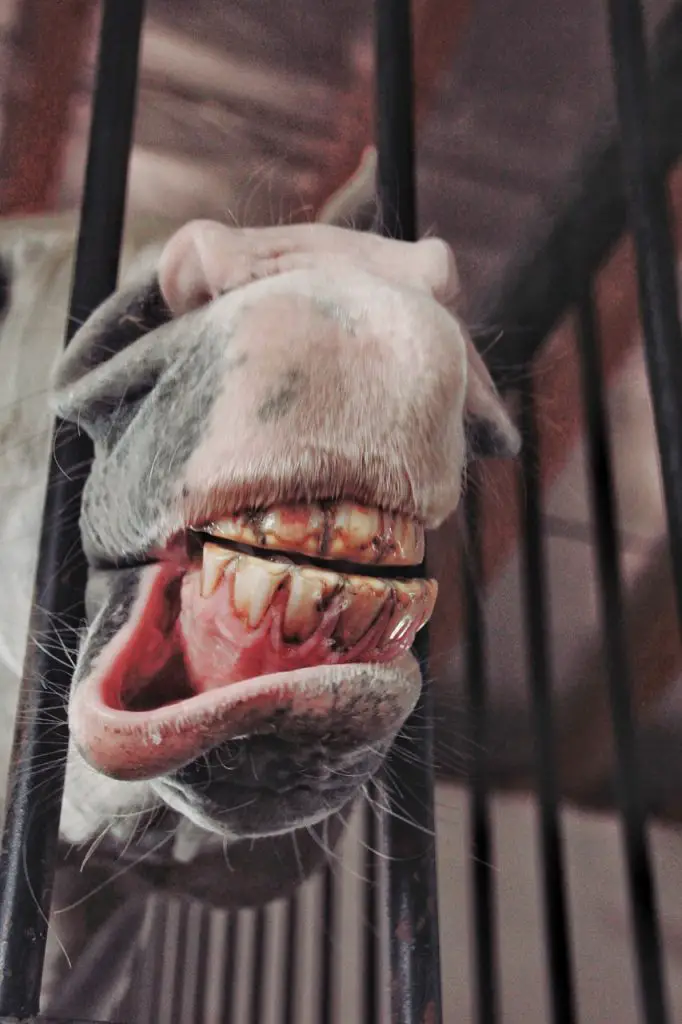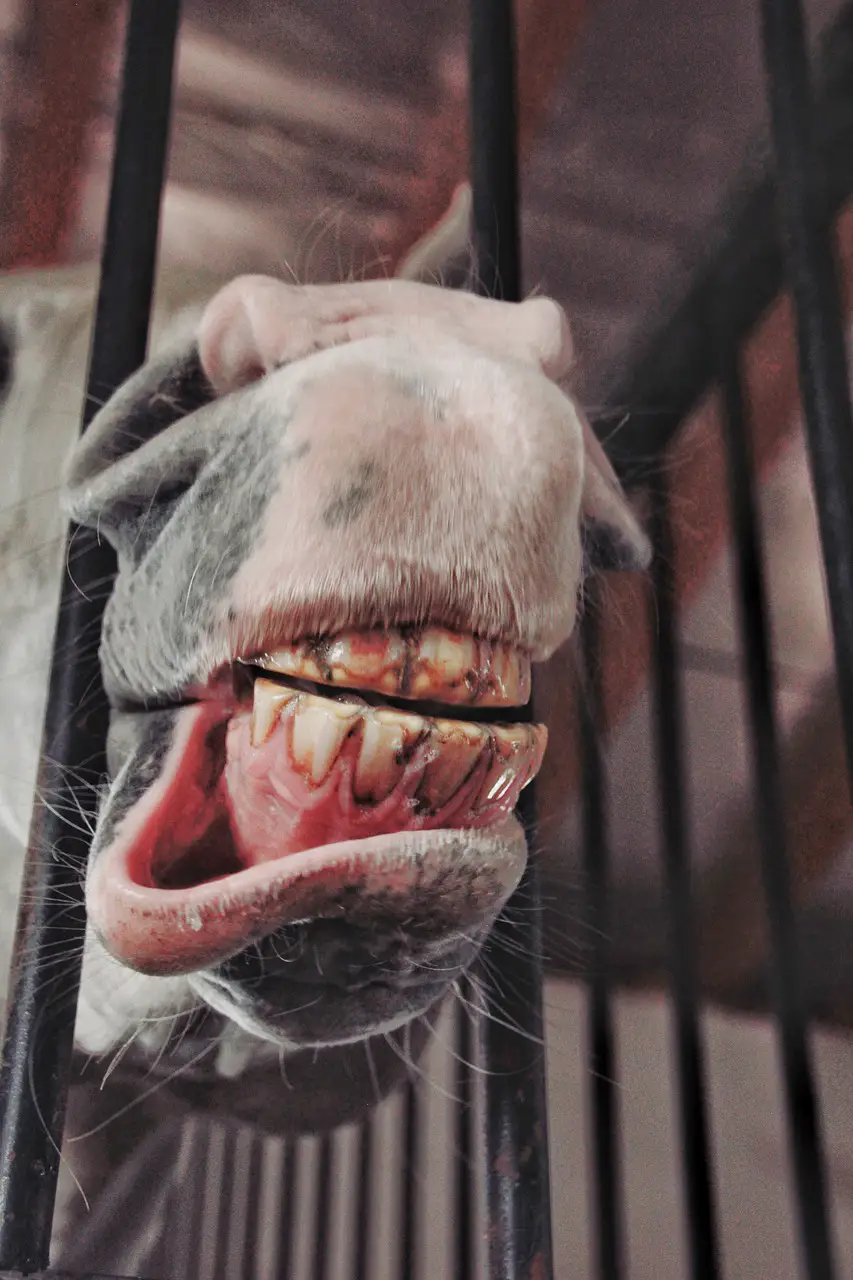Last Updated on March 15, 2022 by Allison Price
Our horses most commonly have abnormal tooth wear. This can cause problems with chewing and digestion which can lead to weight loss. Other serious dental conditions, including death, can be caused by it.
It is easy to fix this problem in its early stages, by removing the overgrowths.These dental overgrowths can be treated by a veterinarian for domestic horses.

What about wild horses without any dental care?
How can wild horses float their teeth.
Continue reading to learn more.Table of Contents
- Wild Horses Have Their Teeth Needed Floated?
- Do Domestic Horses Have to Have Their Teeth Floated
- Comparison between Wild and Domestic Horses
- What is Horse Teeth Floating?
- Why do horses need their teeth float?
- When does a horse need his teeth floated?
Are Wild Horses Require to Have Their Teeth Floated
Wild horses don’t need to have their teeth floated. They are able to rasp their teeth naturally from chewing fibrous grass every day. The incisors cut the grass. This allows the lower teeth to slide across the entire surface. This ensures that teeth are evenly worn without any dental overgrowths.
Are Domestic Horses Require to Have Their Teeth Floated
Because domestic horses are more likely to get abnormally large teeth due to poor diet, they need to have their teeth cleaned regularly. Overgrowths may also be due to congenital conditions that can exist in domestic horses but are not able to sustain the horse in the wild.
Comparison of Wild and Domestic Horses: Abnormal Teeth Wear
It is well-known that domesticated horses are more likely to have abnormal teeth wear than wild horses or horses free-grazing.
These are the main reasons:
- Lifestyle and diet
- Congenital disorders
A Lifestyle and Diet that Leads to Abnormal Teeth
Horses have hypsodont teeth that continue to grow throughout their lives to compensate for wear from grinding food.
Overgrowth is when a tooth’s surface doesn’t touch the opposing tooth. It is important to ensure that the teeth have complete contact with their occlusal surfaces in order to prevent any abnormal overgrowth.
Impact of Horse’s Diet on Chewing Motion
Studies show that the chewing action is affected by the type of food being chewed.
Chewing grass or hay requires more motion than chewing pellets or grains.Below is an image that shows how the chewing motion works in all three directions. This is a comparison of the chewing of pellets and hay.fig 1
This clearly shows how the horse’s mandibular range is greater when he chews forage such as hay than when he chews processed feeds such as pellets.
When eating forage, the movement of the mandibular is larger
The mandibular’s movement is greater, allowing the lower cheek teeth to contact the upper cheeks. The teeth are less likely to develop abnormal overgrowths and have a uniformly worn down.
Mandibular Movement Is Shorter When Consuming Processed Food
When the mandibular has an extremely short movement the upper and lower cheeks do not slide against one another. Overgrowths will result in the areas where the teeth do not touch each other.
Comparison of Dental Abnormalities Between Stabled and Free Grazing Horses
Studies Shows how thoroughbred horses are treated. The incidence of teeth abnormalities is related to diet and grazing times .
These studies compared dental wear anomalies between stabled and free-grazing thoroughbred horses.
Below is the graph. Stable thoroughbred horses have a significantly higher incidence of dental abnormalities, with the exception of sharp enamel point.fig 2
Teeth Wear: The Impact of Head’s Eating Position
Horses can also develop dental overgrowths from the position of their heads while eating.
Head Lower
Horses can lower their heads and have their mandibular jaws slide forward. This results in an alignment of their upper and lower teeth. This allows them to wear their teeth evenly.
If the horse’s head is lower when he eats, his teeth will wear evenly, because their occlusal surface is aligned. This is their natural eating position while grazing.
Raised Head
Horses who eat with their heads raised as recommended by feeders will have their mandibles not slide forward and the teeth won’t align when they chew. This can lead to abnormal tooth wear, such as hooks and excessive transverse ridges.
This image shows the head position and alignment of teeth.
Conclusion
This table shows the lifestyle and diet of wild horses in comparison to domestic horses.
| Spend time chewing | Diet | Head Position | |
|---|---|---|---|
| Wild Horses | You can work for hours (up to 18 hours) | Fibrous grass | Reduced |
| Domestic Horses | A few hours per day (between 2 and 3 hours) | Pellets, grains, and hay | Right |
Because domestic horses aren’t using their teeth correctly to wear down evenly, they have more dental overgrowth than wild horses.
We must remember why we feed our domestic horses this diet.
Horses need to be able to perform at their best and have good health. This cannot be done without high-energy feed.
Horses should have access to pastures and hay whenever possible.
Also, it is important that horses are allowed to eat their food on the ground. This allows them to eat in their natural position, with their heads lowered and their teeth aligned.
An association between congenital teeth disorders and abnormal teeth wear
Congenital Teeth Disorders: The Impact of Breeding Practices
It is well-known that thoroughbreds are descendants of a few foundation stallions. It is possible that their mouth conformational structures could predispose to sharp enamel points regardless of lifestyle or diet.
These results suggest that, in addition to diet and lifestyle, breeding practices which allow certain conformational patterns on domesticated horses could also lead to dental abnormalities.
congenital issues include parrot mouth, supernumerary and displacements, anisognathism excessive, and others. These can lead to abnormal tooth wear.
These problems are usually easily fixed in domestic horses and the horses can live with regular dental care.
Anatomical problems can lead to teeth abnormalities in wild horses. These problems could be fatal in wild horses.
Conclusion
Wild horses are less likely to have abnormalities in their dental wear due to congenital issues. Natural Selection will slowly eliminate horses suffering from dental problems. They will have greater difficulty in surviving and producing offspring.
What is Horse Teeth Floating?
Floating the teeth is a method of correcting a horse’s overgrowths. Sometimes, this is also known as filing or rasping. Dental floats are specialized tools that can be used to remove overgrown areas of a horse’s teeth. These include hooks or sharp enamel points.
These sharp edges can be removed so that the teeth can align properly and alleviate any discomfort from dental overgrowth.
A qualified veterinarian will float the horse’s teeth with dental floats. These are metal files or rasps that can be used to file the horse’s teeth. They come in many sizes and shapes depending on their intended use and the area of the horse’s mouth.
Always disinfect these tools before and after floating horses’ teeth.
Floats can be either manual or motorized. Motorized tools allow for more tooth removal, with less effort from the operator. This can cause excessive crown removal or even expose the pulp.Floating shouldn’t be painful since there are no nerve endings in the horse’s teeth. Horses are often sedated in order to make the procedure more comfortable.
Horses with more severe abnormal wear patterns will need extra rasping. They may also experience sore jaws after the procedure. You may find it difficult to chew food so you should give it a soft diet until your mouth is back to normal.
Why do horses need their teeth floated?
Horses require their teeth to be floated if they have any abnormal dental overgrowths (ex. sharp enamel points, hooks), that can cause pain, infection, or prevent them from properly chewing their food. Their food will not be properly masticated and nutrients won’t be absorbed. This can lead to weight loss.
To learn more about abnormal dental overgrowths, you might want to read the common horse tooth problems article.
How do you know when a horse needs his teeth floated?
These signs will be visible if your horse has abnormally worn teeth that require floating:
- Hardly chewing and dropping food
- Bloody excessive salivation
- Bad breadth
- Swollen face
- Weight loss and appetite
- Head tossing while riding
- Resistance to wear the bit
- Large food particles found in manure
Sometimes, the overgrowths in the teeth are not severe and the horse may find a way to deal with them.
Plan Your Horse’s Routine Dentist Care
Even if your horse doesn’t show any signs of dental problems you can tell if his teeth require floating at routine dental visits. These should be planned according to the horse’s age and any other conditions that warrant more frequent checks.
It’s useful to understand the changes in horse’s teeth with age. This will allow you to identify potential dental problems early on and plan for routine checkups.
| Age | Dental Checkup | Description |
|---|---|---|
| 2,5 to 5, years | Every 6 months | This is when permanent teeth become deciduous. Overgrowths can occur due to retained caps or impacted teeth. |
| 5-20 years | Once a year | Horses’ mouths are more stable so they might only need to float once a year. |
| Over 20 years | Every 6 months | Because older horses have more fragile teeth, they are at risk of developing dental problems. Floating should be minimized as horses are less likely to have a spare tooth to replace the one that has been lost. |


